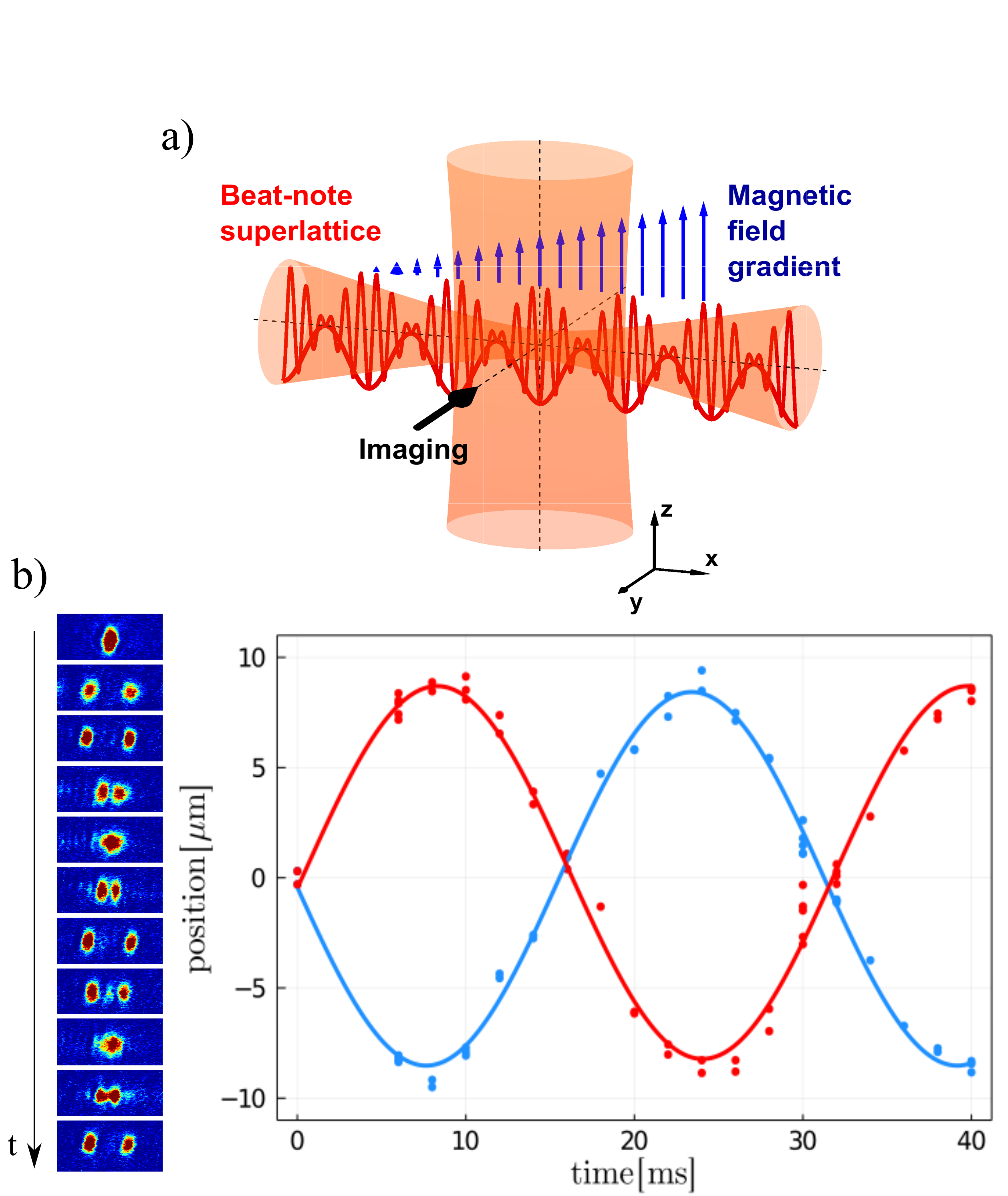L. Cavicchioli, C. Fort, F. Ancilotto, M. Modugno, F. Minardi, A. Burchianti
Dynamical formation of multiple quantum droplets in a Bose-Bose mixture
Phys. Rev. Lett. 134, 093401 (2025)
L. Cavicchioli C. Fort, M. Modugno, F. Minardi, A. Burchianti
Dipole dynamics of an interacting bosonic mixture
Phys. Rev. Research 4, 043068 (2022)
A. Burchianti, C. D'Errico, L. Marconi, F. Minardi, C. Fort, M. Modugno
Effect of interactions in the interference pattern of Bose-Einstein condensates
Phys. Rev. A 102, 043314 (2020)
A. Burchianti, C. D'Errico, M. Prevedelli, L. Salasnich, F. Ancilotto, M. Modugno, F. Minardi, C. Fort
A Dual-Species Bose-Einstein Condensate with Attractive Interspecies Interactions
Condens. Matter 2020, 5, 21 (2020)
C. D'Errico, A. Burchianti, M. Prevedelli, L. Salasnich, F. Ancilotto, M. Modugno, F. Minardi, C. Fort
Observation of Quantum Droplets in a Heteronuclear Bosonic Mixture
Phys. Rev. Research 1, 033155 (2019)
F. Minardi, F. Ancilotto, A. Burchianti, C. D'Errico, C. Fort, M. Modugno
Effective expression of the Lee-Huang-Yang energy functional for heteronuclear mixtures
Phys. Rev. A 100 063636 (2019)
A. Burchianti, C. D’Errico, S. Rosi, A. Simoni, M. Modugno, C. Fort, F. Minardi
Dual-species Bose-Einstein condensate of 41K and 87Rb in a hybrid trap
Phys. Rev. A 98, 063616 (2018)
S. Rosi, A. Burchianti, S. Conclave, D. S. Naik, G. Roati, C. Fort, F. Minardi
Λ-enhanced grey molasses on the D2 transition of Rubidium-87 atoms
Sci. Rep. 8, 1301 (2018)
J. Catani, G. Lamporesi, D. Naik, M. Gring, M. Inguscio, F. Minardi, A. Kantian, T. Giamarchi
Quantum dynamics of impurities in a one-dimensional Bose gas
Phys. Rev. A 85, 023623 (2012)
F. Minardi, G. Barontini, J. Catani, G. Lamporesi, Y. Nishida, M. Inguscio
Bose-Bose mixtures in reduced dimensions
J. Phys.: Conf. Ser. 264, 012016 (2011)
G. Lamporesi, J. Catani, G. Barontini, Y. Nishida, M. Inguscio, F. Minardi
Scattering in Mixed Dimensions with Ultracold Gases
Phys. Rev. Lett. 104, 153202 (2010)
J. Catani, G. Barontini, G. Lamporesi, F. Rabatti, G. Thalhammer, F. Minardi, S. Stringari, M. Inguscio
Entropy Exchange in a Mixture of Ultracold Atoms
Phys. Rev. Lett. 103, 140401 (2009)
G. Barontini, C. Weber, F. Rabatti, J. Catani, G. Thalhammer, M. Inguscio, F. Minardi
Observation of Heteronuclear Atomic Efimov Resonances
Phys. Rev. Lett. 103, 043201 (2009)
G. Thalhammer, G. Barontini, J. Catani, F. Rabatti, C. Weber, A. Simoni, F. Minardi, M. Inguscio
Collisional and molecular spectroscopy in an ultracold Bose–Bose mixture
New J. Phys. 11, 055044 (2009)
G. Thalhammer, G. Barontini, L. De Sarlo, J. Catani, F. Minardi, M. Inguscio
Double Species Bose-Einstein Condensate with Tunable Interspecies Interactions
Phys. Rev. Lett. 100, 210402 (2008)
C. Weber, G. Barontini, J. Catani, G. Thalhammer, M. Inguscio, F. Minardi
Association of ultracold double-species bosonic molecules
Phys. Rev. A 78, 061601(R) (2008)
J. Catani, L. De Sarlo, G. Barontini, F. Minardi, M. Inguscio
Degenerate Bose-Bose mixture in a three-dimensional optical lattice
Phys. Rev. A 77, 011603(R) (2008)
L. De Sarlo, P. Maioli, G. Barontini, J. Catani, F. Minardi, M. Inguscio
Collisional properties of sympathetically cooled 39K
Phys Rev. A 75, 022715 (2007)
J. Catani, P. Maioli, L. De Sarlo, F. Minardi, M. Inguscio
Intense slow beams of bosonic potassium isotopes
Phys. Rev. A 73, 033415 (2006)



